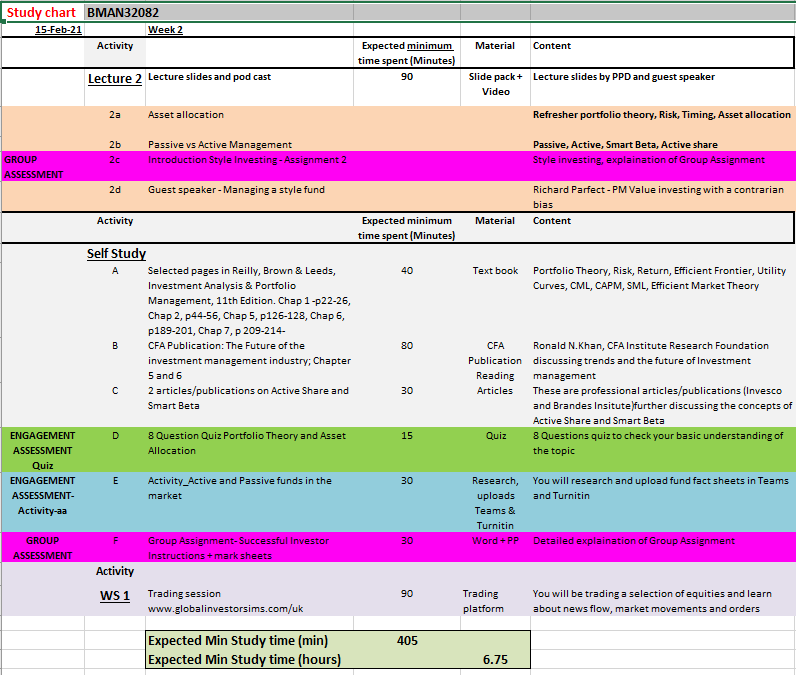Teaching Innovation: “I am always willing to try new things”
 Patricia Perlman-Dee (CFA, SFHEA) is a Senior Lecturer in Finance at the Alliance Manchester Business School (AMBS, Faculty of Humanities). Her career in HE was preceded by 11 years working in large financial corporations with a wide range of financial markets, products and clients. She has created and taught on a range of UG, Masters, MBA and Executive Education courses, and continues to be a learner as well as a teacher through her commitment to continuous professional development. In addition to working as an External Examiner and engagement with professional bodies relevant to her discipline, Patricia completed a PGCE, gained Senior Fellowship of AdvanceHE, and is an assessor for AdvanceHE’s National Teaching Fellowship scheme (NTFS). In 2021 she was a recipient of a Teaching Excellence Award for her approach to ‘Flexible Learning & Digital Delivery’, elements of which we outline here.
Patricia Perlman-Dee (CFA, SFHEA) is a Senior Lecturer in Finance at the Alliance Manchester Business School (AMBS, Faculty of Humanities). Her career in HE was preceded by 11 years working in large financial corporations with a wide range of financial markets, products and clients. She has created and taught on a range of UG, Masters, MBA and Executive Education courses, and continues to be a learner as well as a teacher through her commitment to continuous professional development. In addition to working as an External Examiner and engagement with professional bodies relevant to her discipline, Patricia completed a PGCE, gained Senior Fellowship of AdvanceHE, and is an assessor for AdvanceHE’s National Teaching Fellowship scheme (NTFS). In 2021 she was a recipient of a Teaching Excellence Award for her approach to ‘Flexible Learning & Digital Delivery’, elements of which we outline here.
A focus on practice
Upon joining AMBS Patricia created a new MBA elective course, Practical Investing, which she structured in a way that encouraged students to reflect on how they would take their learning into the real world, as well as incorporating information that would be essential for starting a career in finance. As Patricia describes it, “This course is based on things I wish I had known more about before I went into my first job in finance.” For example, one of the students who took Patricia’s class in 2018 went on to create the global database and investment platform, Stockbook. Patricia now uses this platform in the Practical Investing course, which in turn makes a real impact on current students.
Another feature of the course is the significant input from external professionals. “Over the years, I have listened to students asking for more professional involvement in their teaching,” Patricia explains, and goes on to illustrate how she takes pains to ensure the quality and relevance of this externally-provided content, and ensures that it’s well integrated into the course: “Speakers had to have their presentations approved by me first. We then pre-recorded each speaker’s session. This made it possible to quality control, but it also assisted me in making the teaching material more coherent being able to fully “weave in” reading material, classroom exercises and assessment around the content.” The course was very well-received by students and achieved an average of 4.8 during the 5 years it was taught.
Approach and contribution to pedagogy
This approach is informed by students: “Students’ voice is key in gaining engagement and trust. I have always actively spoken to students to ask what they think would enhance their learning. The response is generally unison in terms of ‘Practical application, keep it real and relevant’. I also always invite former students back as speakers to actively engage with the next cohort”.
Patricia’s student-centred approach also involves making her courses’ organisation clear and accessible. E-learning colleagues have commended her “weekly study charts”, which really assist students in their learning journey by outlining the minimum expected time they should be spending on each task or activity. This practice was adopted by many teachers during the pandemic.
Fig. 1 Example of a Weekly Study Chart

Informed by Gibbs and Simpson’s concept of “assessment for learning” (2004) Patricia created “active engagement assessment”. This consists of a number of smaller, ongoing tasks including workshop attendance, trading sessions, quizzes, six engagement assessment activities and a group portfolio submission.
The rationale behind this approach is based on widening participation principles and a desire to accommodate different learning styles. As Patricia puts it, “Not everybody is suited to ‘cram for exam’. There is also a much higher level of engagement with the course content and ongoing learning is taking place.” Traditional assessment of learning provides information about student achievement at a certain point in time, but often has little effect on learning. However, assessment as learning develops and supports students’ metacognitive skills, so thinking about thinking is crucial in helping students become lifelong learners (Dann, 2014).
Patricia has collated a lot of data on this method of assessment over the years. As one student comments, “The portfolio exercise has taught me skills beyond the course because I had the freedom to try to apply learning without having to think about the consequences for my grade”.
‘COILs’ for international reach and impact
Patricia’s willingness to try new techniques and technology is exemplified by her use of an online Trading Simulation Platform created by a Dutch university. This allows students to enact being a trader on a trading floor, and has allowed Patricia to reach students globally, from across seven different universities. Students have described these sessions as fun, impactful and highly valuable. “Trading sessions were most helpful providing skills that were directly applicable to future careers” (Applied Practical Investing Course evaluation 2019/2020). Patricia’s sessions have gained an international reputation and she has delivered sessions abroad and taken place in other COILs – collaborative online international learning.
Patricia’s teaching methods and approach to ‘Flexible and digital learning’ has had a lasting impact and clearly provides value to students learning and outcomes. Her work encourages us all to ‘keep sharpening the saw’ by being willing to try new things and develop new skills. She comments, “I have always had a very good relationship with eLearning and programme development teams. I am not a technology wiz, but I am always willing to try new things.”
References:
- Dann, R. (2014). Assessment as learning: Blurring the boundaries of assessment and learning for theory, policy and practice. Assessment in Education: Principles, Policy & Practice, 21(2), 149–166. https://doi.org/10.1080/0969594X.2014.898128 [Accessed online 9 Aug 2021]
- Gibbs, G., & Simpson, C. (2004). Does your assessment support your students’ learning. Journal of Teaching and learning in Higher Education, 1(1), 1-30. DOI:10.1007/978-3-8348-9837-1 [Accessed online 9 Aug 2021]
Further information:
- A summary of the each Teaching Excellence award winner can be found on the ITL website’s Awards page.







0 Comments